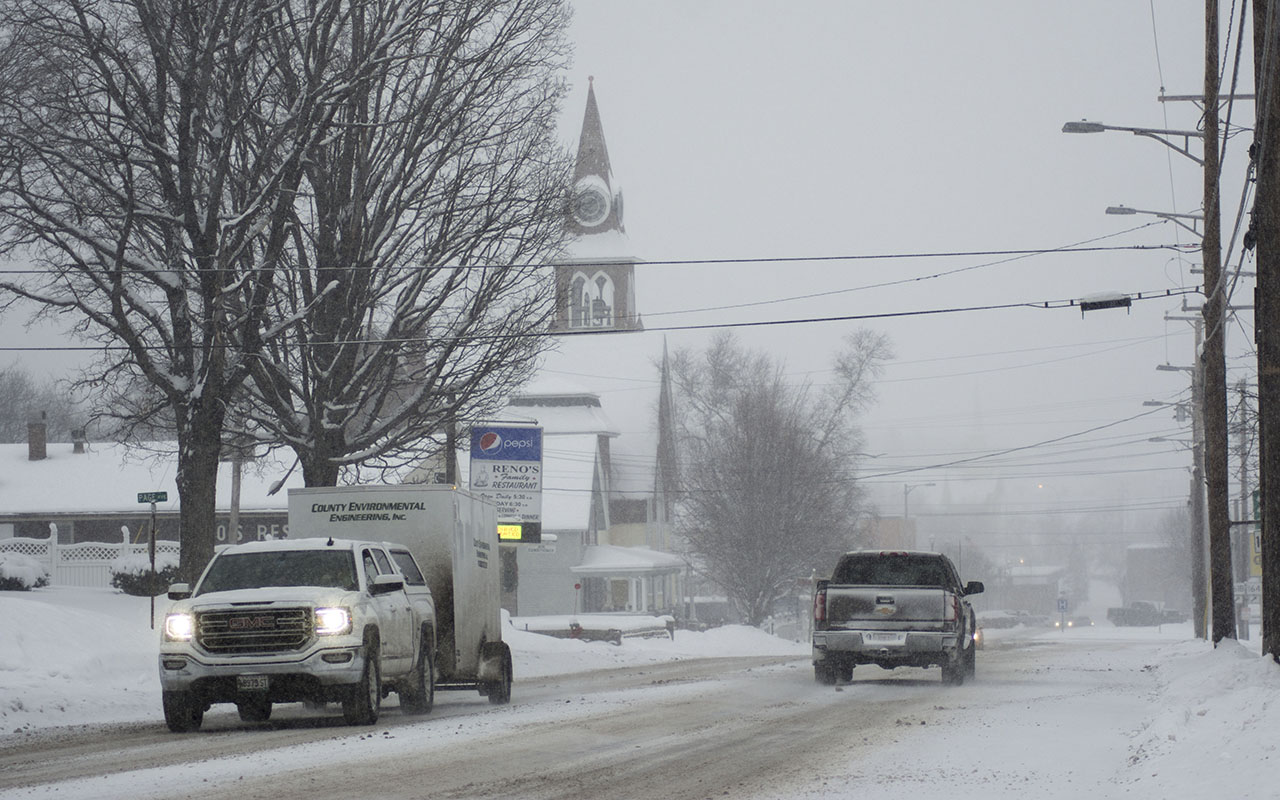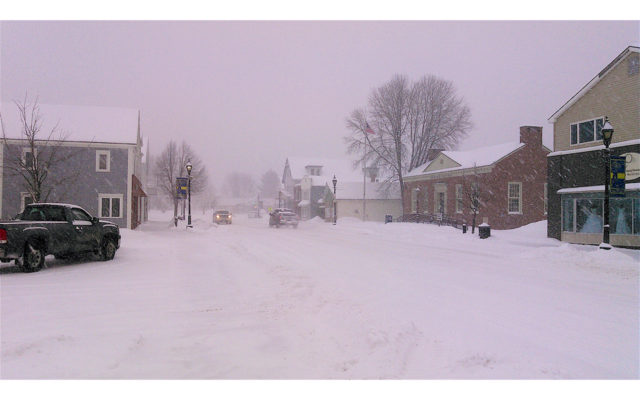
MADAWASKA, Maine — “Winter is coming” is no longer just a “Game of Thrones” reference for me. In fact, as snow fell Thursday morning, I realized how different life will be in Madawaska, Maine, compared to Houston, Texas.
A lot of people ask me why I moved here when they find out I’m from Texas. “I got a job writing for the newspaper,” I always say with a smile.
Then they ask how long I’ve been here, and when I answer, they laugh and say, “Oh so you haven’t been here for a winter yet?”
“Nope,” I always answer. “I haven’t even really seen snow.”
Now, this is the part where people really start to talk. I often get words of wisdom like get a good coat, start my car early, get snow tires, find a winter hobby, keep your front door closed. … But then there are those who are less words of wisdom, and more so words of inspiring discouragement like, “You’re in for it!” or “Good luck!” as they walk away shaking their head.
But, as snow fell Thursday, I began to wonder if I really was ready, or just determined to prove those naysayers wrong. So, I looked to the wisest of people for advice, and when they weren’t available, I settled for Madawaska Chief of Police Ross Dubois. Just kidding. I really have come to rely on the local chief for sound and trusted advice.
I also reached out to local driver education instructor Marc Albert.
Both gave similar advice and examples of different scenarios. The most important piece of advice they both offered was to stay home if the weather is too bad outside. Similar to the “turn around, don’t drown,” slogan that I heard multiple times during hurricanes Ike and Harvey, Dubois said, “If there’s too much snow, then do not go.”
Albert agreed with the sentiment, but both men said the main thing to look out for when you do drive is your speed.
“Slow down, and I mean it too, speed is your enemy,” Albert said. “You’ve got to learn to slow down.”
For some reason, I felt he was speaking directly to my Houstonian driver alter ego.
“Any change in speed can affect how well you control your car,” he said. “Go the speed that road conditions allow. Just because it says 40 mile per hour, doesn’t mean you need to go 40 miles per hour.”
Slowing down well before you come to a stop sign could be the difference between safely stopping in time, or becoming one of the five average accidents local police see just in the first major snow storm.
“The biggest issue we see at the start of winter is people stopping abruptly at stop signs and then sliding into the intersection,” Dubois said.
“Also, the normal distance between you and the car in front of you should be 3-4 seconds,” he said, referring to the amount of time it takes to stop before reaching that vehicle should it stop suddenly. “However, during the winter, with ice and snow, that distance should be increased to 8-10 seconds.”
Understanding your brake system can help you determine a safe distance to begin slowing down, according to both Albert and Dubois. They advised to not power up hills and, if possible, do not stop when driving up a hill.
So, what happens if you slip, skid, or slide on black ice (another fear of mine)? Well, Carrie Underwood might tell you to throw your hands in the air and ask Jesus to take the wheel. But Albert has a different solution.
“If you’re driving and you notice that you’re sliding in a direction that you don’t want to go, take your foot off the accelerator, and turn your wheel toward the direction you do want to go,” Albert said. “I always tell the [students] to steer into the direction you want to go.”
While there might be hiccups that are out of your control, a good Mainer is always prepared.
“Prevention for me is always the best thing,” said Albert. “Sometimes preparing starts the night before; make sure you are rested so that way you are not fatigued and will be able to get up earlier enough to take your time.”
Give yourself more time for travel so you can take your time and drive safely sounds like a great idea. As does starting the car long enough before you leave the house so your windows defrost and don’t fog up on you while you’re driving since visibility can already be hindered by massive amounts of falling snow.
“Make sure you have your windshield wiper fluid checked, because you need to have your wipers on anytime there’s rain or snow.” Albert said. “Also, if your wipers are on, turn on your headlights. But if it’s snowing coming at you, you want to have your dims on, just like if it’s fog,”
Maine has a state law, according to Albert, that headlights must be on from dusk until dawn when driving anyway, so he suggested keeping your headlights on at all times, at least flipped onto auto and if you are using your wipers.
People often tell me I need to get snow tires, and while Dubois said my all weather tires will work just fine for the driving I do, if I were to change my tires, he suggested that I do it early.
“Some people decide to wait too long to change their tires, and are not reminded until the first snow storm,” Dubois said.
Studded tires were allowed to be put on cars beginning Oct. 1 and must be removed by May 1, according to police. Albert says if you have all wheel drive, you don’t need studded tires, but to always make sure your tires are properly and fully inflated.
“Making sure your car is well-maintained is important,” Albert said. “Remember, when you take care of your car, your car takes care of you.”
One tip I hadn’t heard at all before, nor thought of, was the importance of making sure your exhaust is cleared of snow and debris if you get stuck and keep the car running. Evidently, you can die of carbon monoxide poisoning, according to Dubois.
In the event you do get stuck somewhere, like between Madawaska and Fort Kent, here is a list of items both experts suggest you keep in your car: A spare set of clothes, mittens, a blanket, a charged cell phone — if you’re injured or stuck, you’re going to need that phone — jumper cables, a small shovel, water and a healthy snack and a roll of paper towels. Cat litter is handy in the event you’re stuck with no traction; you can throw the cat litter on the ground to gain some traction. As the proud owner of a beautiful golden retriever, I also was advised to keep some of her necessities in the car (like extra water and dog food) along with some safety items like a brightly colored vest (blaze orange or bright red).
After speaking with both driving experts, I feel better prepared to drive in the cold weather. Now, I just need to find an expert to help me build a snowman.
- A winter storm in March 2016 brings fresh snow to the St. John Valley and Main Street in Fort Kent. Driving experts advise Mainers to either stay off the roads during snow storms or to slow down dramatically and drive cautiously. (Don Eno)





